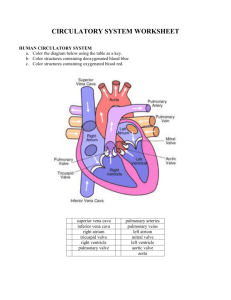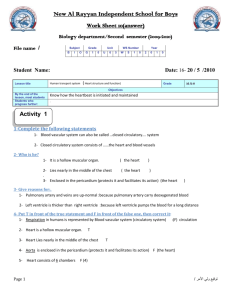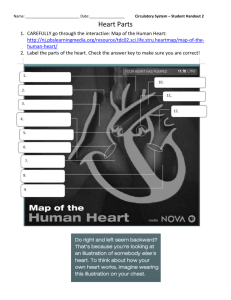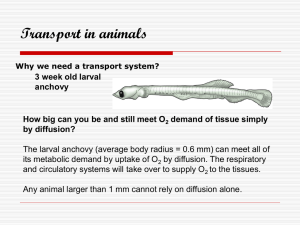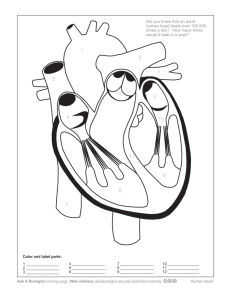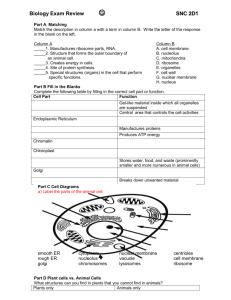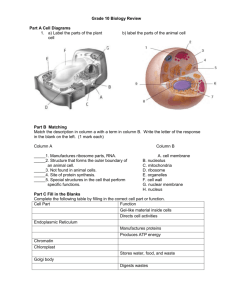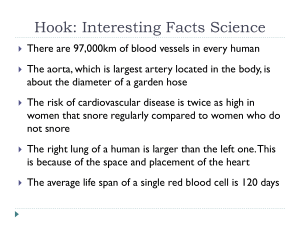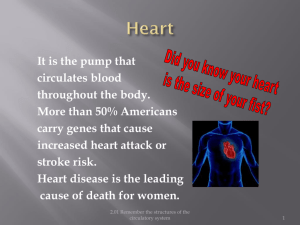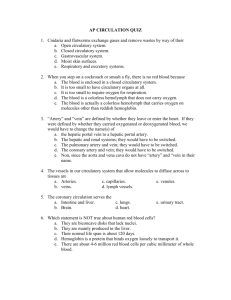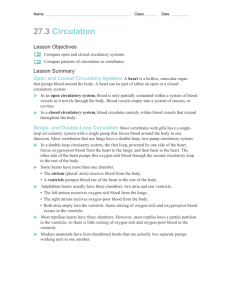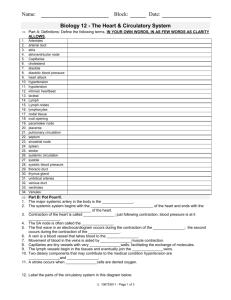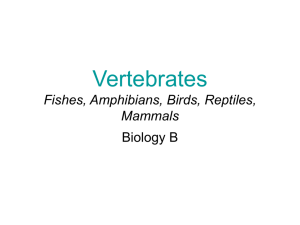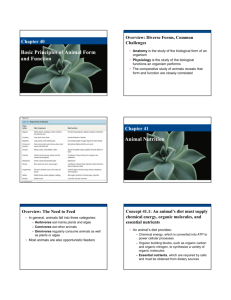Lesson 2
advertisement
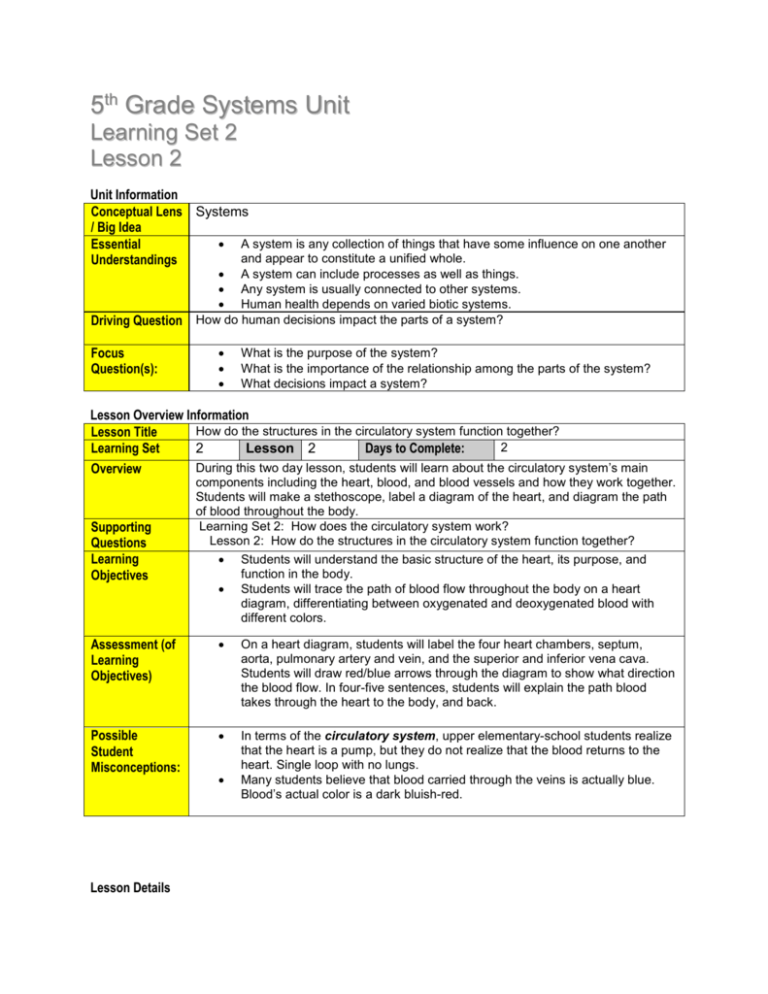
5th Grade Systems Unit Learning Set 2 Lesson 2 Unit Information Conceptual Lens Systems / Big Idea A system is any collection of things that have some influence on one another Essential and appear to constitute a unified whole. Understandings Driving Question Focus Question(s): A system can include processes as well as things. Any system is usually connected to other systems. Human health depends on varied biotic systems. How do human decisions impact the parts of a system? What is the purpose of the system? What is the importance of the relationship among the parts of the system? What decisions impact a system? Lesson Overview Information How do the structures in the circulatory system function together? Lesson Title 2 Lesson 2 Learning Set 2 Days to Complete: During this two day lesson, students will learn about the circulatory system’s main Overview Supporting Questions Learning Objectives components including the heart, blood, and blood vessels and how they work together. Students will make a stethoscope, label a diagram of the heart, and diagram the path of blood throughout the body. Learning Set 2: How does the circulatory system work? Lesson 2: How do the structures in the circulatory system function together? Students will understand the basic structure of the heart, its purpose, and function in the body. Students will trace the path of blood flow throughout the body on a heart diagram, differentiating between oxygenated and deoxygenated blood with different colors. Assessment (of Learning Objectives) On a heart diagram, students will label the four heart chambers, septum, aorta, pulmonary artery and vein, and the superior and inferior vena cava. Students will draw red/blue arrows through the diagram to show what direction the blood flow. In four-five sentences, students will explain the path blood takes through the heart to the body, and back. Possible Student Misconceptions: In terms of the circulatory system, upper elementary-school students realize that the heart is a pump, but they do not realize that the blood returns to the heart. Single loop with no lungs. Many students believe that blood carried through the veins is actually blue. Blood’s actual color is a dark bluish-red. Lesson Details Materials: tennis balls (one per student) (get from PE teacher) Stethoscopes- (get from school nurses) one red and blue pen/pencil per student Heart diagram (one per student) The Path of Blood worksheet (one per student) The Human Body for Every Kid pp. 151-153 by Janice VanCleave Links to Driving Questions: Readings (as preparation for lesson): Readings (class or home-work based on lesson): Writing Tasks: Various pages from Janice Van Cleave and Linda Allisons’ books will be projected via data camera and projector as a method of providing more information to students. Specific pages are listed in the lesson below. Students will use the provided internet sites to read for information on the path of blood flow. Vocabulary introduced: Instructional Strategies used: Preparation Tasks for the Teacher: Content information and resources: Review vocabulary from Set 2 Lesson 1. Septum – dividing wall within a body part, such as the heart (separates the right and left halves) Aorta- the main artery that leaves the left ventricle of the heart Teacher guided discussions Cooperative learning Hands-on activities get stethoscopes from nurse get tennis balls for PE teacher copy diagram of heart (one per student) copy The Path of Blood (one per student) create link page for students to use to diagram the path of blood flow Helpful sites for students to use to diagram the path of blood flow. http://www.childrensheartinstitute.org/educate/heartwrk/bloodflw.htm http://www.childrensheartinstitute.org/educate/heartwrk/hearthse.htm Diagram/color page of heart’s blood flow http://www.childrensheartinstitute.org/kidsonly/heartflw.htm http://commons.wikimedia.org/wiki/File:Diagram_of_the_human_heart_(cropped).svg http://www.howdoestheheartwork.com/?p=11 http://www.nhlbi.nih.gov/health/dci/Diseases/hhw/hhw_pumping.html http://www.bostonscientific.com/templatedata/imports/HTML/CRM/heart/heart_bloodflow.html http://www.smm.org/heart/heart/pumping-f.htm Day 1 Introduction to the Lesson: 1. Have students make fists, and then relax them: repeat several times. The heart works in a similar way: It tightens and pushes blood out of the heart (make a fist); it relaxes and blood comes into the heart (relax the fist). Distribute the tennis balls and have students explore the pumping of the heart. Explain that the heart is the strongest muscle in the body and that it pumps day and night nonstop for life. Have students squeeze the tennis ball; this is the tightening force that happens in the heart and it’s needed to pump the blood. Have students try to rhythmically squeeze the ball seventy times in one minute (an adult heart beats about seventy times per minute). Ask them to describe what happens (their hand begins to cramp). Emphasize again how hard the heart works. The heart is part of the delivery system of the body. Ask students what else is needed to make deliveries of air and nutrients happen. (veins, blood) Conducting the Lesson: Day 1 -continued 2. Read pages 151-153 from Janice VanCleave’s The Human Body for Every Kid. Point out the heart diagram on page 153. 3. Show unlabeled diagram of the heart and label the parts together as a class. Explain that on paper the sides of the heart are flip-flopped because it is a diagram. If you were to wear this picture on the outside of a shirt, you would have to turn it around. Therefore, the labels for the left atrium and left ventricle are actually on the right hand side of the paper. Discuss how to remember the blood flow: arteries-away, veins-toward, capillaries-connect. 4. Read “Listen In,” pages 50-15 from Blood and Guts. Have each student listen to their heartbeat. After each student has listened to their heartbeat, ask them to describe what they heard. Explain that the heart sound lub-dub is made from the opening/closing of valves. Day 2 1. Review parts of the circulatory system: heart, blood, and blood vessels. Now that students have learned these parts, they will now learn how they work together to get blood throughout the body. Hand out to students The Path of Blood work sheet. Have students label previously learned parts of the heart: left atrium, right atrium, left ventricle, right ventricle, septum, and aorta. Next, using the graphic from the following web site, http://www.childrensheartinstitute.org/educate/heartwrk/hearthse.htm point out and label the pulmonary artery, pulmonary vein, superior vena cava, and inferior vena cava. Explain that valves are like one-way doors that push blood along from one part of the heart to another. 2. If a computer lab is available, have students work in pairs and research the path of blood flow. To save time, create a page of links to various sites that would be helpful to students (see list under Content Information and Resources). Using a red and blue pencil or pen, students will use arrows to label the path of blood flow on their diagrams. Once all students have their diagrams completed, discuss as a class. Additional Activity Ideas 1. Walk Through the Heart http://www.paec.org/teacher2teacher/a_walk_through_the_heart.pdf 2. Bill Nye the Science Guy video titled “Blood and Circulation” Issues to consider: Suggestions and strategies: Assessment task resources: Rubric for evaluation: If a computer lab is not available for students to research the blood flow, complete the diagram as a class.

